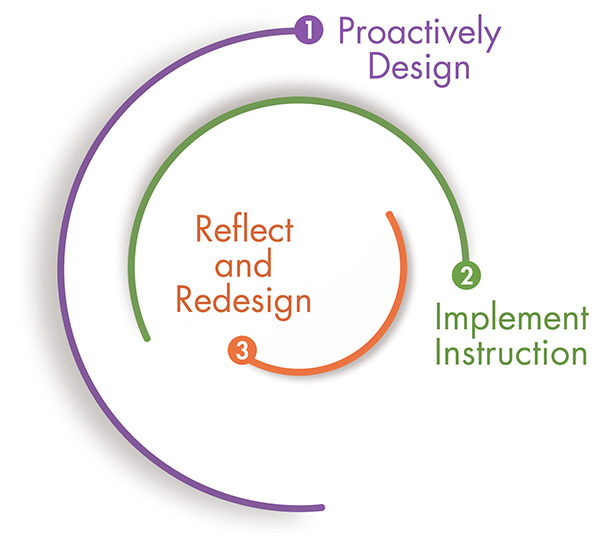Universal Design for Learning: Designing Learning Experiences That Engage and Challenge All Students
Wrap Up
 Because of the range of learner variability, educators may find it difficult to design learning experiences that engage and challenge all students. However, when they use the Universal Design for Learning (UDL) framework, educators anticipate learner variability and design instructional experiences that incorporate options for all learners. When designing instruction through a UDL lens, educators must remember that barriers to learning exist in the design and not in the students themselves. With this in mind, educators can eliminate barriers and design flexible learning experiences that make learning more accessible for all students. This accessibility empowers students to become expert learners, thus increasing learner agency.
Because of the range of learner variability, educators may find it difficult to design learning experiences that engage and challenge all students. However, when they use the Universal Design for Learning (UDL) framework, educators anticipate learner variability and design instructional experiences that incorporate options for all learners. When designing instruction through a UDL lens, educators must remember that barriers to learning exist in the design and not in the students themselves. With this in mind, educators can eliminate barriers and design flexible learning experiences that make learning more accessible for all students. This accessibility empowers students to become expert learners, thus increasing learner agency.
The UDL framework is built on three principles:
- Design multiple means of engagement: Educators proactively plan more than one way to incorporate students’ interests and identities, to encourage their efforts, and to develop emotional capacity while learning.
- Design multiple means of representation: Educators make sure to use more than one way to present information, to clarify and promote a shared understanding of the language and symbols used in the content, and to build students’ knowledge.
- Design multiple means of action and expression: Educators plan more than one way for students to interact with learning experiences, to communicate their thinking and understanding, and to effectively use strategies.
When designing instruction, educators can apply these principles to the four primary instructional components—goals, assessments, methods, and materials. The table below highlights key features for each of these components when a UDL lens is applied.
| Instructional Component | Key Features |
| Goals | Goals should be:
|
| Assessments | Assessments should be:
|
| Methods | Methods should be:
|
| Materials |
Materials should be:
|

Designing a learning experience using a UDL lens is an iterative process. Educators can make small changes and apply the UDL framework throughout the learning experience as they:
- Proactively design—before instruction
- Implement—during instruction
- Reflect and redesign—after instruction
Revisiting Initial Thoughts
Think back to your responses to the Initial Thoughts questions at the beginning of this module. After working through the Perspectives & Resources, do you still agree with those responses? If not, what aspects about them would you change?
Do these learning experiences sound familiar? Do you think they are effective?
How can educators design instruction that engages and challenges all students?
How can educators identify and address potential barriers when designing instruction?
When you are ready, proceed to the Assessment section.